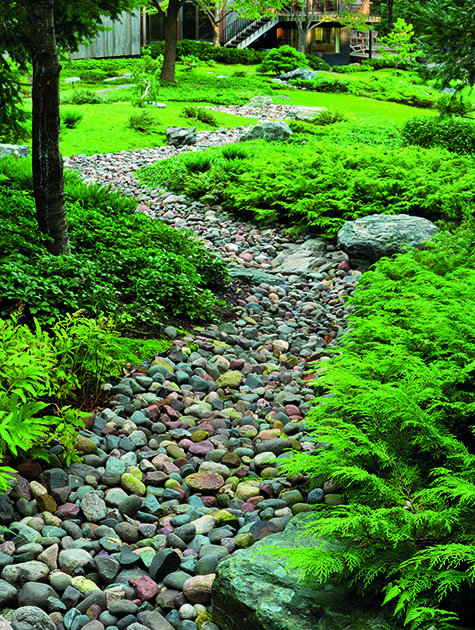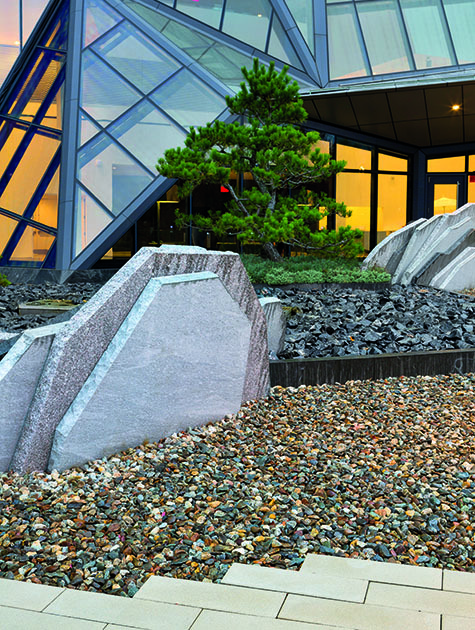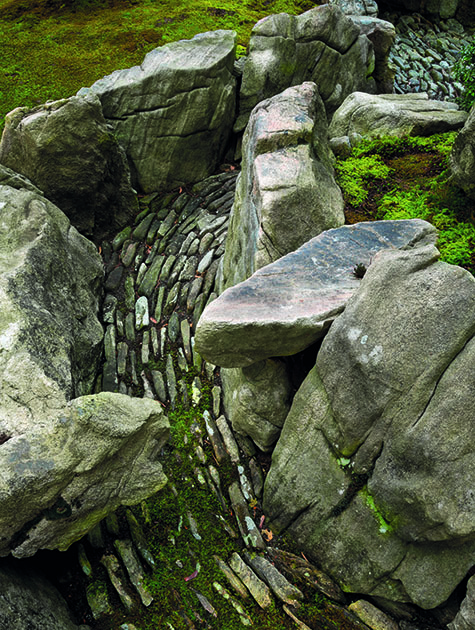Visionary Landscapes: Japanese Garden Design in North America

The calming nature of Zen gardens and the allure of Japanese-style has been enchanting and seducing landscape designers and gardeners throughout the wider world for well over 150 years. Stepping into a Japanese-inspired courtyard is the perfect antidote to a day spent in crowded subways, noisy streets and stressful work environments. We crave quiet and order —two areas where traditional Japanese garden designs excel— as a counter balance to our increasingly chaotic lives. But how can a North American gardener successfully integrate elements of the Japanese design aesthetic without feeling forced or veering toward kitsch?
Visionary Landscapes: Japanese Garden Design in North America, Kendall Brown’s latest book —featuring the work of five contemporary garden designers; HÅichi Kurisu, Takeo Uesugi, David Slawson, Shin Abe and Marc Peter Keane— addresses this question. Filled with beautiful and inspirational photographs by David M. Cobb, Brown’s book highlights Japans’s design influence upon North American public and private gardens in settings ranging from urban corporations and penthouse rooftops to community hospital gardens and secluded forest clearings.

Shin Abe’s work (pictured above), which may be seen in many public spaces, including The United Nations’ Peace Bell Courtyard in Manhattan and the Education First building in Cambridge, MA, is striking in its natural, calming-effect within urban hardscape. The designer’s sculptural use of natural stone shapes and textures, paired with disciplined plant selections, creates a sense of serenity in noisy, chaotic, city environments. It is within these urban spaces where the Japanese design aesthetic often works so well; bridging the hard-edged and the man-made to the balancing, grounding forces of nature.
Although all five designers push Japanese-inspired garden design forward —distilling and fusing Asian inspiration into the North American landscape— the work of David Slawson (top image), and Marc Peter Keane (image below), seems most successful in the more natural environment.
From a design perspective, I often find it more difficult to successfully introduce man-made elements to nature, than to introduce natural elements to man-made environments. Knowing which aspects of Japanese garden design will translate to natural, North American environments demands a solid understanding of both. Marble chips, clipped azalea and lanterns? Risky. Moss-covered paths, local stone, artfully-pruned, native trees and reflective water bowls? Right on. Lawson and Keane have found a contemporary balance.

Visionary Landscapes: Japanese Garden Design in North America is an excellent introduction to the history and art of blending Japanese-inspired design ideas into urban and rural gardens on this continent; a beautiful book and a great gift for the gardener on your list who is looking for a bit of contemporary, Japanese-style landscape inspiration.

A copy of this book was provided by Tuttle Publishing in exchange for independent, un-biased review. No other compensation was received. The Gardener’s Eden is not an affiliate of Tuttle Publishing, but is an affiliate of Amazon.com.
Article copyright Michaela at The Gardener’s Eden, all rights reserved. All content on this site, (with noted exceptions), is the property of The Gardener’s Eden and may not be used, reproduced or reposted elsewhere without written consent.
Do you enjoy visiting The Gardener’s Eden? You can help support this site by shopping through the affiliate-links here. A small percentage of each sale will be paid to The Gardener’s Eden, and will help with site maintenance and web hosting costs. Thank you!
***

